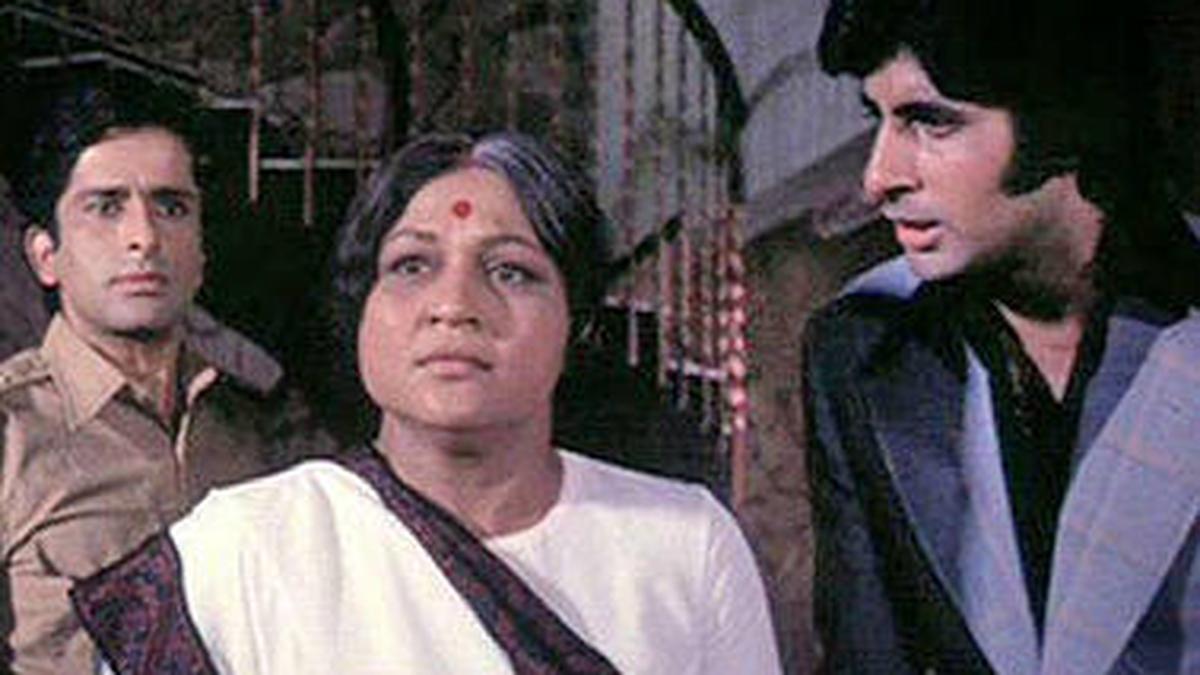
Fifty years after Deewar: No wall so high Premium
The Hindu
Fifty years after the iconic film Deewar’s release, its social conflict hasn’t faded, and the emotional tapestry hasn’t worn out
Once during a conversation, I asked Javed Akhtar about the meaning of Vijay’s return to his mother’s lap in the climactic scene of Deewaar. He said the text he wrote with Salim Khan is open to interpretation — “Did he return to the mother because of his ideology or his emotion is still debatable. After all, the mother also goes to the temple to see her defiant son, after he is shot at by her younger son, the upholder of law. It is also some kind of acceptance.”
Some scripts are not cast in stone. Deewaar is one of them. Fifty years after the film shook the conscience of a nation by putting an end to Nehruvian romanticism, its ideas, myth and symbolism continue to speak to us. The conflict hasn’t aged, and the emotional tapestry hasn’t worn out. The capitalist designs to destroy workers’ unity that Anand Babu (Satyan Kappu) seeks to expose are almost complete. Choosing between family and revolution has proven to be a zero-sum game.
The road from the temple still bifurcates into opposing directions and the wall that sprung up between the brothers still stands tall. In fact, new bricks are being added and the scope of windows is being scuttled.
What’s different and, perhaps, dangerous is that the bridge under which the two brothers met to resolve their differences is no longer in harness. The ambivalence of the mother (Nirupa Roy), the symbol of idealism, social mores and multiple perspectives is no longer there. Ravi (Shashi Kapoor) might lose the argument today and, perhaps, his existence too, for the mother has switched to Vijay’s side as we have noticed in the film’s new-age iterations such as KGF and Pushpa.
Such is the power of Salim-Javed’s screenplay that its dramatic transitions still keep you hooked. The characters are something we care about and root for, even five decades after the film’s release. One can find traces of The Public Enemy, Mother India and Gunga Jumna in the structure of Deewaar, but the master storytellers wove the plot points from several sources to create an innovative picture of the urban flux.
Deewar released on the cusp of Emergency, when director Yash Chopra was not blindsided by chiffon romance and was keen on filming what was simmering beneath the ground. Produced by Gulshan Rai, it was the second film that Chopra directed outside his own or brother B.R. Chopra’s banner, and showed his craft in mapping a socio-political commentary in a slick, urbane mould.
Beyond the brooding anti-establishment tone, the film makes a statement on the system where the degree of corruption counts. When Ravi shoots at a teenager, only to find he is stealing a loaf of bread because his family is hungry, he goes to his house to offer some food. The boy’s mother lashes out at his largesse and the state of affairs where the big crooks go scot-free while a young boy is shot at for stealing a few crumbs. In comes the teacher-father (A.K. Hangal). He silences his wife and says it is about the intent, not the amount.

‘Love Scout’ K-Drama review: Han Ji-min and Lee Jun-hyuk lead a mature, refreshing workplace romance
‘Love Scout K-Drama’ review: A refreshing, mature workplace romance












